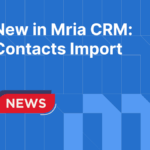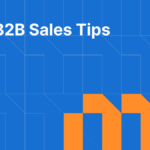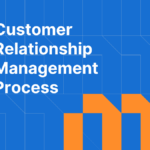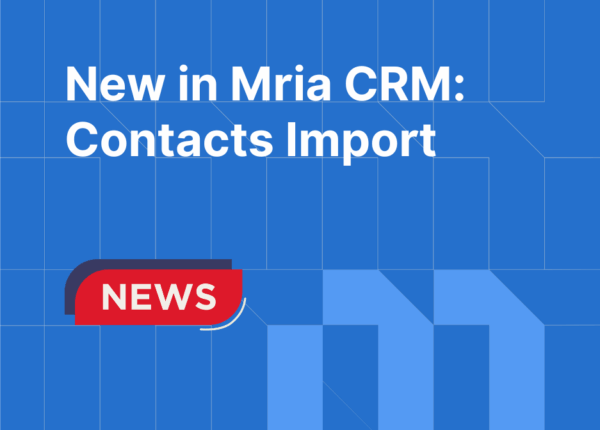Choosing whether or not to implement a CRM is a defining decision for any team managing leads, sales, or customer relationships. It’s easy to postpone, especially when existing tools feel “good enough.”
But as businesses grow, what once worked begins to fail: deals fall through, follow-ups get missed, and team alignment breaks down.
Below, we explore the most common real-world scenarios that lead companies to ask: Why use a CRM?
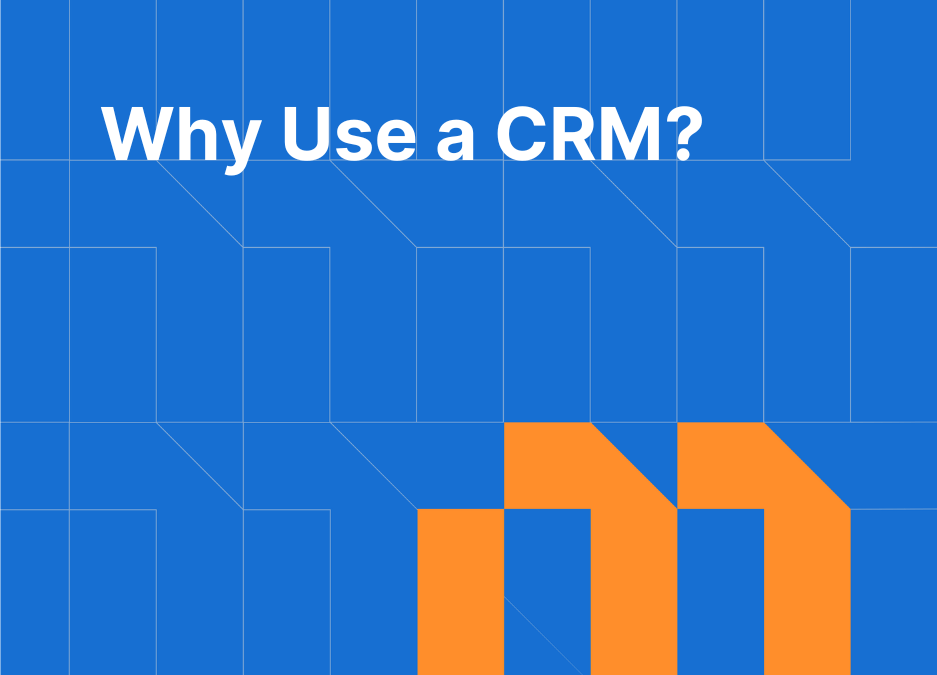
Table of Contents
What Is a CRM and What Does It Actually Do?
A Customer Relationship Management (CRM) system is a centralized platform that helps businesses manage every aspect of their interactions with leads, prospects, and customers.
At a basic level, it stores and organizes contact information like names, emails, phone numbers, and companies. But that’s just the beginning.
A CRM also records every touchpoint across the customer lifecycle: meetings, emails, calls, support tickets, deals in progress, and past transactions. It becomes a living history of the relationship between your business and each customer, accessible to anyone on your team who needs it.
But what truly defines a CRM system is how it structures the customer management process. It provides the workflows, pipelines, automation, and reporting needed to manage relationships intentionally, not reactively.
A CRM system typically enables you to:
- Capture and qualify leads from multiple sources (forms, ads, referrals)
- Track deal progress through a defined sales pipeline
- Log all customer interactions across channels, automatically or manually
- Assign tasks and next steps with deadlines and ownership
- Segment and analyze your customer base by value, lifecycle stage, or engagement
- Generate reports and forecasts to guide revenue planning and resource allocation
- Maintain alignment across departments, especially sales, marketing, and support
Without a CRM, these activities are scattered across inboxes, spreadsheets, chat threads, and individual memory. The result is inefficiency, duplication, and missed opportunities.
With a CRM, everything is structured, centralized, and visible, which is why it becomes not just a tool, but a foundation for operational clarity and customer growth.
If you want a deeper explanation, check out our article on what a CRM is and how it works.
Why Should I Use a CRM If My Current System Still Works?
Most businesses start by managing customer relationships with tools they already have: spreadsheets, shared inboxes, task managers, lightweight contact databases. This may work early on, but as the team grows and sales activity increases, the cracks begin to show.
Even if you have a basic process or a few tools in place, you’re likely still juggling disconnected systems, duplicated data, and manual oversight. These systems feel efficient until they quietly start costing you missed follow-ups, stalled deals, and lost context.
A CRM brings everything together into a unified structure that eliminates blind spots and supports growth with consistency.
A CRM system replaces scattered tools with a structure that helps you:
- Centralize customer data, communication logs, and deal information in one place
- Track sales activity through defined pipeline stages
- Automate reminders, follow-ups, and task assignments
- Share complete customer history across team members and departments
- Eliminate duplicate outreach and internal confusion
- Provide accurate reporting without time-consuming manual updates
- Build scalable processes that grow with your business, not against it
If you’re wondering why use a CRM system when your current tools still work, the real question is whether those tools will still support you when the volume doubles, your team expands, or your pipeline complexity increases. A CRM is what ensures you’re ready when it does.
To see how a CRM supports each stage of the customer lifecycle in practice, check out our Customer Relationship Management Process: A Complete Guide.
Why Use a CRM for Sales?
Sales teams are under constant pressure to close deals faster, follow up better, and manage more deals with less administrative overhead. But most underperforming sales processes aren’t caused by lack of effort. They’re caused by lack of structure, visibility, and consistency.
High-performing sales teams succeed not just because of talent, but because their process is designed to support repeatable execution. That’s exactly what a CRM enables.
How a CRM transforms sales from activity to execution:
- Maps every opportunity to a clear pipeline stage with visible next steps
- Surfaces stalled deals, overdue follow-ups, and neglected accounts in real time
- Connects outreach, meetings, notes, and calls to each deal automatically
- Creates a repeatable framework for lead qualification and progression
- Helps reps prioritize efforts based on deal value and momentum, not guesswork
- Gives sales leaders insight into performance patterns and pipeline risk
- Standardizes reporting, so time is spent selling, not filling in spreadsheets
Without a CRM, even strong salespeople operate in silos. They rely on personal systems, memory, and subjective judgment. That leads to inconsistent results, especially when the team scales.
With a CRM, sales becomes a process, not just an outcome. Every rep follows the same framework, every manager sees the same data, and every deal moves forward with intention.
Why Should a Small Business Use a CRM?
Small businesses often succeed because they move fast, stay close to customers, and avoid bureaucracy. But those same traits can become liabilities when key details live in inboxes, follow-ups depend on memory, and relationships are tied to individuals rather than systems.
The risk isn’t complexity, but fragility. One missed message, one team member leaves, or one forgotten promise can cost a sale or damage trust. That’s why the right time to adopt a CRM is before things start slipping.
How a CRM helps small businesses build resilience before scaling:
- Captures all customer interactions in one place, not scattered across tools
- Makes handoffs easy by keeping contact history available to the whole team
- Enables one person to manage more leads without losing context
- Helps avoid duplicate outreach or delayed follow-ups
- Tracks deal progress without relying on personal task lists
- Provides continuity when team members are away or move to new roles
- Builds the structure needed to scale without painful cleanup later
If you’re asking why should a small business use a CRM, the answer is simple: staying small isn’t the problem; staying disorganized is. A CRM helps you work like a larger team before you become one.
Why Is CRM Visibility Essential for Sales Leadership?
Sales leaders are expected to deliver results, but also to explain what’s driving them and what’s holding them back. That requires more than deal counts and revenue totals. It requires a clear view into the process behind every number.
Without a CRM, visibility relies on individual updates, fragmented tools, and inconsistent reporting. This makes it difficult to forecast accurately, coach effectively, or scale with confidence.
How a CRM equips sales leadership with the visibility to lead strategically:
- Tracks every deal’s position, owner, and next step across the pipeline
- Flags inactive opportunities and inconsistent follow-up
- Connects team activity to conversion patterns and deal velocity
- Surfaces weak spots in the process before they impact results
- Enables coaching based on process adherence, not just outcomes
- Supports reliable forecasting with current, structured data
- Reduces dependence on manual status updates and gut feeling
If you’re leading a sales team and wondering why use a CRM system, the reason is clear: you can’t manage what you can’t see, and a CRM gives you the visibility to lead with precision.
How Can a CRM Support Teams Beyond Sales?
CRM systems are often introduced to manage pipelines and support sales reps, but the most lasting value comes when they’re adopted across all customer-facing functions. Marketing, onboarding, support, and customer success all contribute to the relationship. A CRM connects their work in one shared space.
Without a CRM, these teams rely on handoffs that often break down, leading to repeated questions, missed context, or confused customers who are forced to start over every time they speak to someone new.
What a CRM makes possible when used across the full customer journey:
- Gives onboarding, support, and success teams instant access to deal history and sales context
- Helps marketing and sales align on lead quality, conversion timelines, and campaign impact
- Centralizes communication history so customers don’t have to repeat themselves
- Connects support tickets and product feedback to the accounts that matter most
- Tracks engagement across departments in one continuous customer timeline
- Reduces duplicate outreach or disconnected messaging from different teams
- Enables leadership to view the entire relationship, not just isolated activities
If you’re thinking of CRM systems only in terms of sales tracking, you’re leaving value on the table. A CRM becomes exponentially more powerful when every team that touches the customer shares the same system.
How Can a CRM Assist Technical and Product Teams?
Developers and product managers rarely speak to every customer, yet their work is driven by customer needs and commitments made during the sales cycle. A CRM gives technical teams the context they need to build, fix, and ship with clear priorities and fewer surprises.
With access to CRM data, technical teams can:
- Surfaces feature requests, bug reports, and promised timelines directly from support and sales notes
- Links high-value accounts to specific issues, helping product managers prioritize the roadmap by revenue impact and customer urgency
- Records implementation details and integration requirements, reducing back-and-forth during deployment
- Provides a single timeline of conversations, so developers understand business context before troubleshooting
- Connects release updates to the customers and stakeholders who need to be informed, ensuring smooth rollouts
- Enables cross-functional retrospectives by tying product changes to customer outcomes tracked in the CRM
When technical teams have direct visibility into real customer conversations, they make better prioritization decisions and deliver solutions that align with business goals. A CRM bridges the gap between code and customer, turning feedback into features and issues into improvements, without relying on second-hand summaries.
How Can a CRM Help Improve Customer Retention?
Winning a customer is only the first step. Retaining them requires consistent engagement, contextual support, and timely intervention when something goes wrong. These efforts often fall apart when there’s no shared understanding of the customer’s history, goals, or challenges.
A CRM helps teams move from reactive problem-solving to proactive relationship management. It ensures that no one is starting from scratch when speaking to a customer — and that warning signs don’t go unnoticed.
A CRM supports customer retention by helping teams:
- Monitor engagement over time and identify accounts that are going quiet
- Log and review previous issues so customers aren’t asked to repeat themselves
- Track renewals and contract dates to avoid last-minute scrambles
- Surface support trends that could signal churn risk or product dissatisfaction
- Coordinate follow-ups across departments to show continued value after the sale
- Prioritize outreach to high-value accounts that need attention
- Align success and support teams with the full sales and product history
Retention doesn’t depend on more meetings or more tools, it depends on context and consistency. A CRM gives your team both, so customers feel known, supported, and valued long after the deal closes.
How Does a CRM Support Reliable Sales Forecasting and Reporting?
Manual reports are possible, but they’re always delayed, incomplete, or built on disconnected data. A CRM changes that by linking all sales and customer activity into a single system that updates in real time.
This structure gives leaders access to insights that would be difficult or impossible to generate with spreadsheets, static tools, or fragmented systems.
A CRM improves reporting and decision-making by enabling teams to:
- Track pipeline movement as deals progress or stall, without requiring manual updates
- Analyze conversion rates tied to pipeline stage, activity history, and deal ownership
- Filter results using live account status, contract value, or engagement level
- Forecast revenue using actual close rates and pipeline aging data
- Understand how specific actions, like timing of follow-ups, influence deal outcomes
- Identify trends across the full customer lifecycle, from lead to renewal
- Create shareable dashboards that stay current without extra effort
Without a CRM, reporting is a snapshot. With a CRM, insights are built into the system itself, allowing faster, more confident decisions across the business.
Can I Use a CRM Within My Existing Work Management Tool?
Many teams already use platforms like Jira, Asana, or Trello to manage work. Adding a separate CRM can feel like overcomplicating things, especially when you’re trying to stay lean, move fast, and avoid tool overload.
But managing customers outside your core workflow leads to fragmentation. Sales uses one system, support another, and delivery teams have no visibility into either. That disconnect creates delays, duplicate updates, and missed context.
Choosing a CRM that integrates with your existing work management system can prevent these problems before they start.
Here’s why an integrated CRM saves time, context, and coordination effort:
- Keeps deals, tasks, and customer data in the same environment your team already uses
- Reduces tool-switching and manual duplication across platforms
- Links contacts and deals to actual work, such as tickets, sprints, or deliverables
- Ensures every team sees what’s been sold, promised, or escalated
- Helps you scale customer operations without rebuilding your tech stack
- Increases adoption by making the CRM part of the workflow, not separate from it
- Future-proofs your process as you grow and cross-functional collaboration increases
If your team works in Jira, Mria CRM was designed specifically to bring customer relationship management into that environment, so you don’t have to choose between structure and simplicity. You get both.
When Is the Right Time to Implement a CRM?
Teams often delay CRM adoption because their current system still “works.” That system might include shared spreadsheets, scattered task lists, or a basic contact manager. These tools feel lightweight until the team grows, the pipeline expands, or someone leaves and takes key information with them.
The reality is that most companies wait too long. By the time the pain is obvious, the cost of fixing it is higher, and existing habits are harder to change.
Signs it’s time to adopt a CRM:
- Sales relies on individual memory or manual task tracking
- Deals fall through due to missed follow-ups or unclear ownership
- Customer data is stored in multiple systems with no single source of truth
- Handoffs between sales, onboarding, and support require repeating information
- Reporting takes hours to compile and can’t be trusted
- New hires struggle to understand how customer relationships are managed
- No one can answer where a lead came from, what’s been done, or what happens next
A CRM is easiest to implement before complexity takes hold. It sets the foundation for growth, creates shared habits early, and ensures your systems scale with your goals, not against them.
Answering the Question That Started It All
Most teams adopt a CRM only after things start to break down: deals are lost, follow-ups are missed, and no one can explain what’s happening in the pipeline. By that point, the cost of disorganization is already showing up in results.
If there’s one thing to consider, it’s this:
Don’t wait until you feel the pain. Build the structure before you need it.
A CRM is not just a sales tool or a contact database. It’s how you make sure your team works with focus, your customers stay connected, and your business grows without losing control.
So if you’re still asking, why use a CRM?
Because the longer you wait to answer that question, the more it costs you to catch up.


